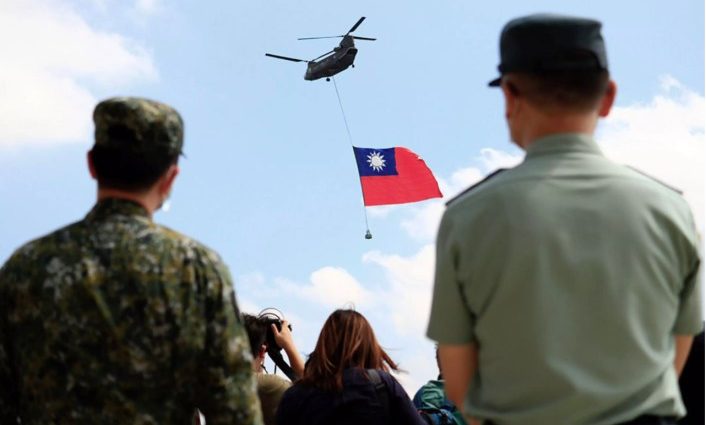In June 2023, four months after a wayward surveillance balloon blew his impending visit off course, US Secretary of State Antony Blinken visited Beijing to set about erecting the “guardrails” US President Joe Biden and Chinese President Xi Jinping envisaged in Bali in November 2022.
He was followed in early July by Treasury Secretary Janet Yellen. The United States and China may be close to stabilizing their rocky relationship — an opportunity they must not pass up.
The Biden administration’s strategy on China has been to invest in domestic competitiveness, align efforts with a network of allies and partners and, harnessing these assets, compete with China. The administration has also sought to isolate China via the Summit for Democracy, Quad and Indo-Pacific Economic Framework and through bodies such as the G7.
Having incentivized or leaned on allies to chip away at their relationships with China, Washington now seeks to establish a “floor” under its own working relations with Beijing.
For China, forging the “least worst” relationship with the United States retains value from a geopolitical and developmental standpoint, given ties could yet hurtle to the point of total breakdown.
There are no illusions, though, that bilateral trade and technology frictions are a mere economic matter. They are intended to suppress China’s development and rise – eliciting calls for “self-reliance.”

US-China guardrails must be cognizant of these eroding political foundations. To be durable, they must abide by certain broad understandings.
The “pressure valve of dialogue” must become the “first and most fundamental” guardrail on the relationship. While beneficial engagement cannot coexist with coercion, dialogue must not be construed as leverage or a favor to be bestowed.
Dialogue must be based on mutual respect. Both sides are at liberty to introduce sanctions for national security or public interest reasons. Akin to the European Parliament’s suspension of ratification of the European Union-China investment agreement in May 2021 following Beijing sanctioning some EU actors, neither side should harbor the illusion that business-as-usual measures or open channels of communication can be maintained with sanctioned parties.
Next, the practice of self-restraint rather than the pursuit of behavior modification of the other must become standard order. Both Washington and Beijing must rise above their visions of ideology and sculpt a durable consensus. This includes the formation of civilian-led crisis management channels, rather than solely relying on the unsatisfactory military-to-military mechanisms.
Just because the Shanghai Communique-inaugurated era of strategic cooperation has died does not axiomatically mean the United States and China are fated to succumb to conflict. An intermediate equilibrium is realisable but its authorship will require exceptional diplomatic skill.
Third, US-China relations must be framed with the view to reassuring the other and narrowing differences without losing sight of the underlying challenges. In Bali, Xi had proffered “three noes.” China does not seek to change the existing international order, does not interfere in the United States’ internal affairs and has no intention of displacing the United States.
Biden tendered “five noes.” The United States does not seek a new Cold War. It does not seek to change China’s system. The revitalization of its alliances is not directed at China. It does not support Taiwanese independence. And it does not seek conflict with China.
These assurances provide a ballast to steady the ship of US-China relations. It serves little purpose for either side to dwell on the underlying intentions of its counterpart’s assurances. Both sides should accept them in good faith and aspire to memorialize them in a joint communique if the opportunity arises.
Fourth, both parties must endeavor to abide by the inviolability of each other’s territorial interests. Washington vowed in the Shanghai Communique that it would “not challenge [the Chinese] position” that Taiwan is a part of the People’s Republic of China — even as it “acknowledge[d]” but did not “recognize” Taiwan to be part of China.
Today, the United States relentlessly challenges that proposition, including stripping out the phrase “Taiwan is a part of China” from the State Department’s fact sheet on Taiwan relations. The challenge must stop and Washington must credibly signal that its “one-China policy” is not being hollowed out.

For its part, Beijing must credibly signal that peaceful reunification remains on the table and that there is no specific timeline for reunification. Episodes like the balloon incident must not be repeated either. But until China’s human rights record improves and the state’s intervention in the economy is reduced, the profound perceptual gap between the two sides will not markedly narrow.
Finally, both sides must anchor their relationship in settled international law. China must fully comply with the South China Sea arbitral tribunal’s award. The ruling by a Law of the Sea Annex VII-constituted tribunal that the United States’ sprawling Diego Garcia military base in the Western Indian Ocean is effectively housed on illegally occupied Mauritian territory (under British colonial administration) is also binding.
Successor arrangements must be arrived at with due regard for Mauritius’ sovereignty. World Trade Organization (WTO) rulings must be honored too. The international trading order is, after all, part of the “rules-based order.”
Prospects for sustained progress in US-China relations may be modest in the near term. Depending on the result of the 2024 US presidential election, an opportunity to craft a more durable strategic framework might open up. To seize that opportunity, much hinges on getting the guardrails right at the present.
Sourabh Gupta is a Senior Fellow at the Institute for China-America Studies in Washington, DC.
This article was originally published by East Asia Forum and is republished under a Creative Commons license.

